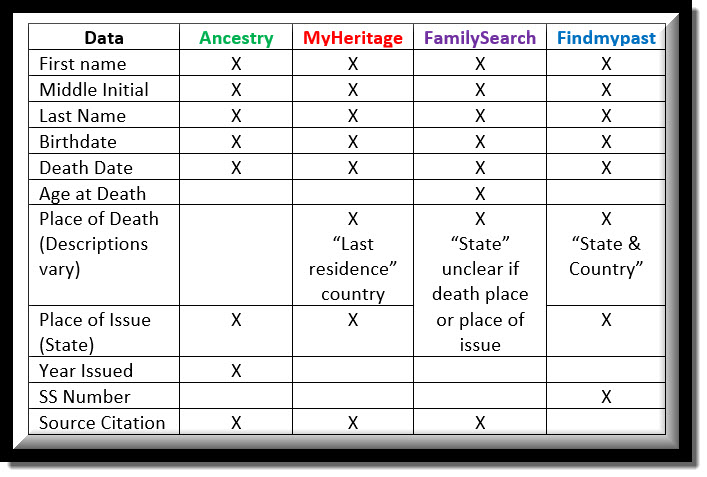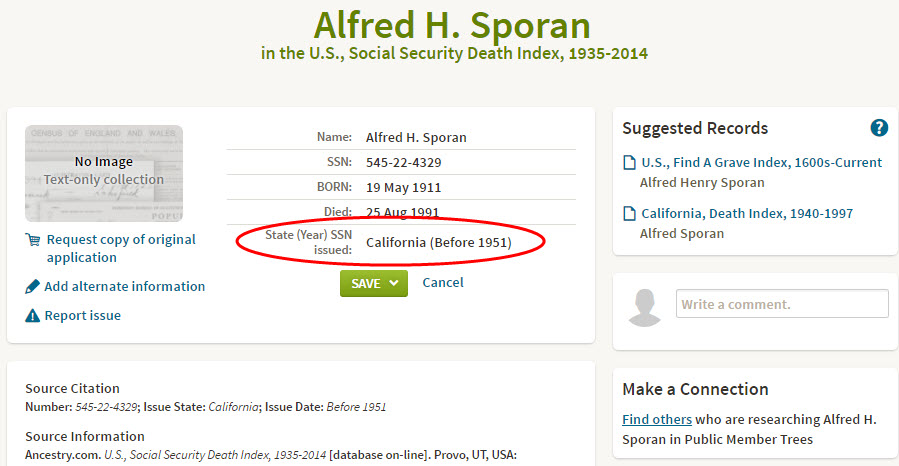by Lisa Cooke | Mar 31, 2017 | 01 What's New, Apps, Military, Records & databases
A WWI history app for genealogy leads our top picks for this week! History buffs are going to love Remembering WWI, an app that makes your WWI family history come alive. Also in this week’s new and updated genealogical collections, Swedish church records, Canadian marriage records, Pennsylvania naturalizations, and more.
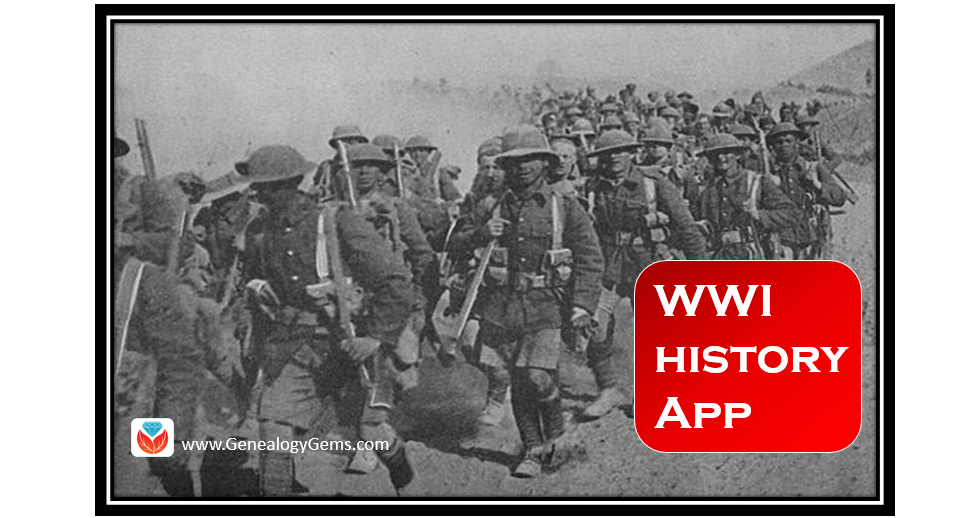
WWI History for Genealogy
The National Archives has launched Remembering WWI, a free app for iPad and Android. It is especially geared for young people, but with an ability to explore, collaborate, and engage with NARA’s extensive collection of WWI photographs, it’s for any history buff. The app commemorates the 100-year anniversary, in April 2017, of the U.S. entry into World War.
It is now available in the iTunes and Google Play stores.
What is even more interesting about this app is how it invites people nationwide to contribute their own stories. You can create your own collections and build and share new narratives around the people, events, and themes you are researching.
Sweden – Norrbotten & Kopparberg – Church Records
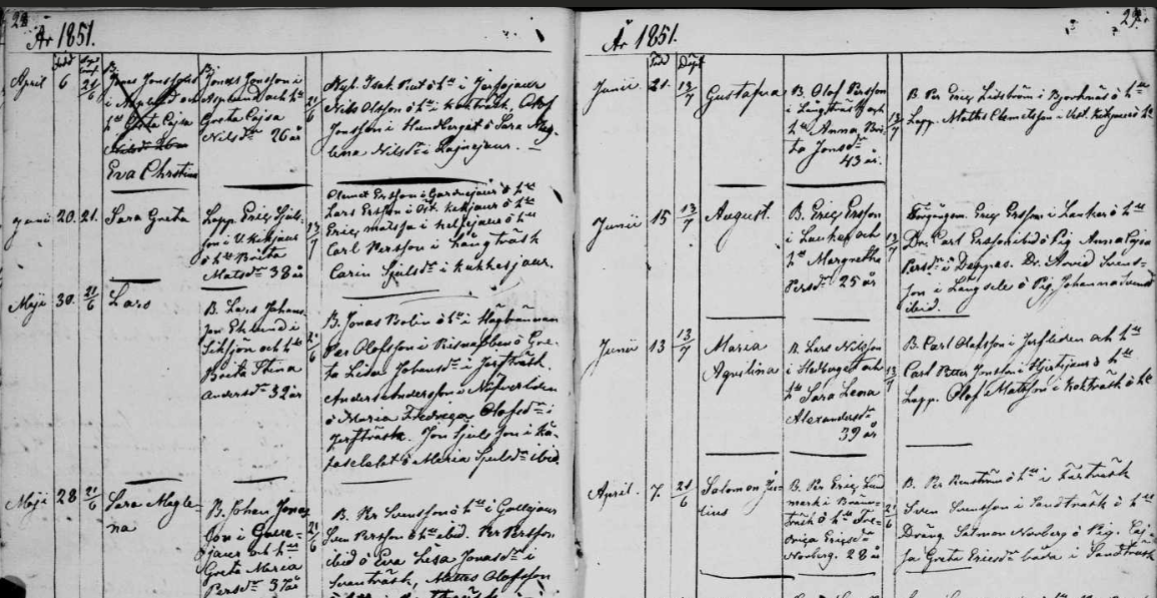
Church Records in Swedish Collections at FamilySearch
Also this week at FamilySearch, Sweden, Norrbotten Church Records, 1612-1923; index 1658-1860 has been updated. You will note the large year span in this collections coverage. Because of this, records will vary. Generally speaking, you will find church records include births, marriages, and deaths and also images to clerical surveys, registers of birth, marriage, death, move-in and move-out lists, confirmations, and church accounts.
Church records are particularly helpful when searching pre-civil registration time frames or when there has been loss or damage to the civil records you need.
In particular, these collections contain household examination records. A household examination record is filled with genealogical data and some other unusual statistics. Information may include:
- The name of the farm, village, or rote (registration area).
- Names of household members including any pigor (female workers) or drängar (male workers)
- Birthplace
- Birth date or age
- A score for catechism knowledge
- Dates of partaking communion
- Dates of participation with the Household Examination
- Moving information
- Death date
- Marriage date
- Disciplinary notes
- Vaccination against smallpox
- Reference to military conscription
Sweden, Kopparberg Church Records, 1604-1900; index 1628-1860 was also updated.
Canada – Ontario – Marriage Registers
The Ontario, County Marriage Registers 1858-1869 at FamilySearch have also been updated. These records contain an index and images of marriages. There are some records that actually date prior to 1858 and after 1869, so be sure to check the collection thoroughly.
These marriage records will generally include the following information:
- Name of groom
- Name and maiden name of bride
- Age of groom and bride at marriage
- Names of groom’s parents and bride’s parents
- Place and date of marriage
- Names of witnesses or possible relatives
United States – New Hampshire – Civil War Service & Pension Records
The New Hampshire, Civil War Service and Pension Records, 1861-1866 are now available at FamilySearch and have been recently updated. The collection includes both an index and images of Civil War enlistment papers, muster rolls of New Hampshire Regiments, and pension records.
The pension records are arranged by town with indexes arranged by name and town. The enlistment papers are arranged by military unit, volume, and year range. The muster rolls are arranged by unit name and folder number.
Pension papers can often be used as substitute records for vital information such as birth, marriage, and death. Additional information may include birth place, occupation, and a physical description.
United States – Alaska – Vital Records
Though a rather small collection with only just over 80,000 records, the Alaska, Vital Records, 1816-1959 may be just what you need. These records include both an index and digital images of birth, marriage, death, and divorce records from Alaska covering the years of 1816-1959. This collection is being published as images become available.
United States – Pennsylvania – Petitions for Naturalization
Pennsylvania, Eastern District Petitions for Naturalization, 1795-1931 at FamilySearch continues to grow. Now up to over 300,000 records, the collection will offer naturalization petitions for the U.S. District Court for the Eastern district of Pennsylvania for the years 1795 to 1931. The records corresponds to NARA publication M1522 part of Record Group 21 Records of District Courts of the United States.
Naturalization papers are an important source of information about an immigrant’s nation of origin, his or her foreign and “Americanized” names, residence, and date of arrival. It is important to note that naturalization changed over time and information will vary greatly.
by Lisa Cooke | Jul 13, 2017 | 01 What's New, Video
Celebrate your stories with video–whether it’s your family history, the story of your business, or an event or pastime you want to share. Check out 5 weeks of great video ideas from Animoto, including my own family history video on an ancestor’s immigration story.

This year marks a big milestone for Genealogy Gems: we turned 10 years old! My favorite video creation tool, Animoto, also marks a decade this summer. We’re celebrating with them–and what better way than with video?
 Last week Animoto celebrated relationships with Facebook expert and author of Relationship Marketing, Mari Smith. She inspired everyone to create a video celebrating relationships — whether it’s a video about your family or friends, a video showing appreciation for a client, or a video celebrating another bond that’s important to you.
Last week Animoto celebrated relationships with Facebook expert and author of Relationship Marketing, Mari Smith. She inspired everyone to create a video celebrating relationships — whether it’s a video about your family or friends, a video showing appreciation for a client, or a video celebrating another bond that’s important to you.
This week, I’m honored to have been invited by the good folks at Animoto to share why our histories are so important and offer up the video I created that I hope will inspire others. Click here to watch that short can you buy medication online video (it’s the first one). Of course they also asked me to share a celebratory video of my own! On the same page, check out a short video I created about the Cooke family coming to Canada. You’ll also find other videos celebrating the story of a business, birth of a child, history of a product and a photographer’s love of his craft. It’s amazing how many topics we can celebrate powerfully with a short video!
Click here to get inspired with five weeks of great video celebration ideas, whether you want to use video for family history storytelling, work, every day life, or all of the above.
Show off your family history video!
Which family history story will you tell with video and Animoto? Join the party and show your Genealogy Gems pride by sharing them on Facebook, Instagram, or Twitter using the hashtags #CelebrateWithVideo and #GenealogyGemsPodcast.
Let us help you make a family history video with these detailed how-tos:
How to video record a fantastic family history interview
How to create a family history video with Animoto
 Thanks for clicking here to check out Animoto’s subscription service for creating professional-quality videos. When you use this affiliate link and make a purchase, I will be compensated. I appreciate you using these links because that compensation helps make the Genealogy Gems blog possible.
Thanks for clicking here to check out Animoto’s subscription service for creating professional-quality videos. When you use this affiliate link and make a purchase, I will be compensated. I appreciate you using these links because that compensation helps make the Genealogy Gems blog possible.
by Lisa Cooke | Apr 17, 2015 | 01 What's New, Australian, British, Canadian, Conferences, images, RootsTech, Technology, United States
 Were you among the record-breaking audience of 23,918 attendees at RootsTech 2015 in Salt Lake City, Utah? Even if you were, chances are you didn’t catch all the top talks.
Were you among the record-breaking audience of 23,918 attendees at RootsTech 2015 in Salt Lake City, Utah? Even if you were, chances are you didn’t catch all the top talks.
RootsTech staffers have announced that over 1000 FREE regional RootsTech events, called RootsTech Discovery Days, will be hosted around the world throughout 2015. “Select sessions and planning resources from RootsTech 2015 have been recorded, translated in 10 languages, and made available online to support…local volunteer organizers,” says a media statement.
“By the first week following the conference, 65 local family discovery day events had already been held, including 27 in Latin America, one in Korea, and another in the Philippines. Over 1,000 more events are expected to be held throughout 2015, significantly extending the reach and impact of this popular conference.”
Click here to search for a RootsTech Family Discovery Day event near you. We notice that there plenty of options across the U.S. and in England, Canada, Australia and South Africa. Where do YOU want to look for an event?

Lisa speaks to a packed audience at RootsTech 2015.
by Diahan Southard | Apr 29, 2017 | 01 What's New, Genealogy Giants Websites, Records & databases |
Social Security Death Index (SSDI) search is not necessarily as straight forward as you might think. We’re going to explore what SSDI records are, their range of availability, and how they compare across the Genealogy Giants records websites.
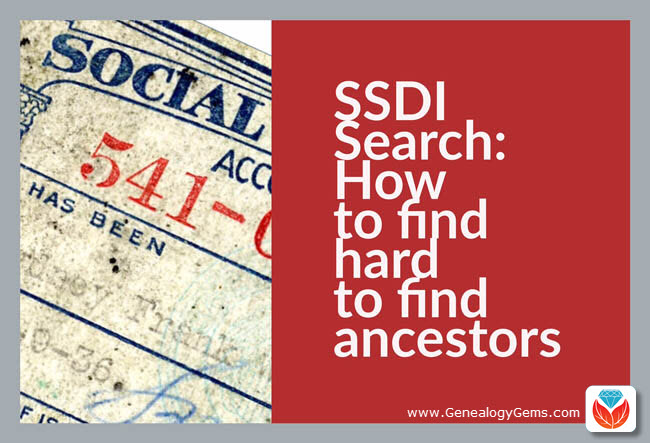
If you’ve been dabbling in genealogy research for a while, then you are very likely familiar with the Social Security Death Index, more commonly referred to as the SSDI. But even experienced researchers have questions, like the one that Marti sent me recently:
From Marti in Texas:
Hi Lisa!!
Thank you so much for all your helpful resources on your website!! I just listened to the SSDI Working Backwards podcast episode (Family History: Genealogy Made Easy episode 3) and my grandparents passed away in 2012 and 2014. Do you know when the last time the index has been updated, I cannot locate them.
Thank you so much!!
This two-fold question is a good one. While many genealogical record sets have privacy laws that dramatically restrict more recent records from being available, the SSDI is not one of them. But even if the records are available, there may still be times when we have trouble locating our relatives.
Whenever you run into a road block finding ancestors in a record collection, do what good detectives do, and go back to the beginning. In this case, let’s learn more about the collection itself.
Social Security Death Index Background
The Social Security Act was signed into law in 1935 by President Franklin Roosevelt. By 1937, more than 30 million Americans had registered. Today, the Death Master File from the Social Security Administration contains around 90 million records of deaths and they are publicly available online.
Some data goes as far back as 1937, but most of the information included in the SSDI dates from 1962. This is because the Social Security Administration began to use a computer database for processing requests for benefits in 1962. Some of the earlier records back to 1937 have not been added.
It’s important to know that the SSDI does not have a death record for everyone. It’s also very possible that you may occasionally find an error here and there if something was reported incorrectly. But don’t let that stop you from tapping into this major resource! It’s a wonderful alternative source for finding people who were counted in the 1890 census (which was unfortunately mostly destroyed) because they may still appear in the SSDI. Also, those who were born before vital records registration in their home state began, may also show up. Remember, working folks just had to live past 1937 to have been possibly included. That means some people could have been born sometime in the late 1800s.
Now that we have a handle on the history of the SSDI, let’s look at who has it and how recent their records are.
Where to Find the SSDI
The Social Security Death Index (SSDI) is available on all of the ‘big 4’ genealogy records websites, which we here at Genealogy Gems refer to as the “Genealogy Giants.” The links below will take you directly to the SSDI search page for each.
- FamilySearch
(Current as of February 28, 2014)
- Ancestry
(1935-2014)
- MyHeritage
(It is not stated how current the database is, but a search for 2014 did retrieve results)
- Findmypast
(No dates or citation provided, but a search for people who died in 2014 did retrieve results)
In Marti’s case, she will want to search every single one of these websites for her ancestors. The good news is that they all appear to be up-to-date, but that doesn’t mean they are all exactly the same. The same collection of genealogy records can appear differently from site to site for a number of reasons such as accidental omissions, variations in the power of their search engine, differences between indexers and scanners, and Optical Character Recognition (OCR) inaccuracies. These may or may not affect the SSDI, but the point is that you can’t go wrong searching each one of the Genealogy Giants just in case. And since SSDI search can be conducted for free at all of the Genealogy Giants, it doesn’t cost you anything to do so.
A quick way to find all of the websites that include the SSDI is to Google SSDI genealogy. Here’s a link to the results.
SSDI Search Head-to-Head Comparison
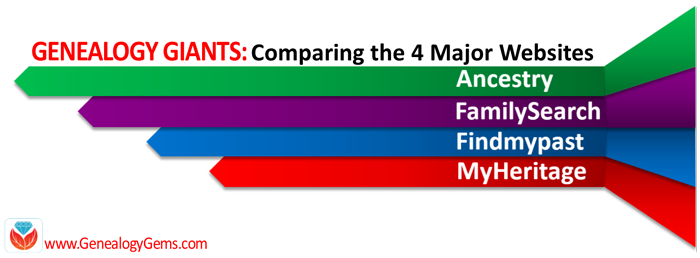 Another excellent reason to search the SSDI on multiple websites is that each website displays the information a little differently. And as you can see from the chart below, when it comes to the Genealogy Giants, there are definitely differences.
Another excellent reason to search the SSDI on multiple websites is that each website displays the information a little differently. And as you can see from the chart below, when it comes to the Genealogy Giants, there are definitely differences.
It’s interesting to note that Ancestry is the only website that provides information about the year that the Social Security number was issued. It isn’t exact, but it’s more than the others offered in my search for Alfred H. Sporan.
The differences between the 4 major websites can be sometimes subtle or quite dramatic. Understanding their strengths and weaknesses, as well as free versus subscription offerings, is key to successful research that is both efficient and cost-effective.
The quick reference guide Genealogy Giants: Comparing the 4 Major Websites is a must-have for anyone serious about getting the most out of free and paid subscriptions.
The author of this 4-page full-color cheat sheet, Sunny Morton, is Contributing Editor here at Genealogy Gems, and she’s packed this guide with everything you would ever want to know, and many things you probably didn’t know that you needed to know. You can
pick up your copy here in our store.
SSDI Search and Beyond
There is another database at Ancestry that is worth keeping your eye on. It’s called the U.S. Social Security Applications and Claims Index and it shouldn’t be missed! Currently, this covers 1936-2007, but who knows, they may update it in the future. It includes even more information. It was first released in 2015. Read more about it here at Genealogy Gems.
Gems: Share Your SSDI Search Experience!

I invite you to take a moment to share your SSDI search experience in the comments below. Have you had any surprises? Did you find a difference between the records found at different websites? We want to hear your story because we all benefit from each other’s experiences.
Disclosure: This article contains affiliate links and Genealogy Gems will be compensated if you make a purchase after clicking on these links (at no additional cost to you). Thank you for supporting Genealogy Gems!
by Lisa Cooke | May 19, 2017 | 01 What's New, Records & databases
These new and updated genealogical records span three continents and date to the Middle Ages: Australia colonial portraits, New South Wales and Queensland; millions of new U.S. marriage records, a WWI online exhibit, Liverpool church records, a Romanian digital archive, German (Bavarian) civil registers, Confederate musters (GA), PA obituaries, and a Minneapolis newspaper.
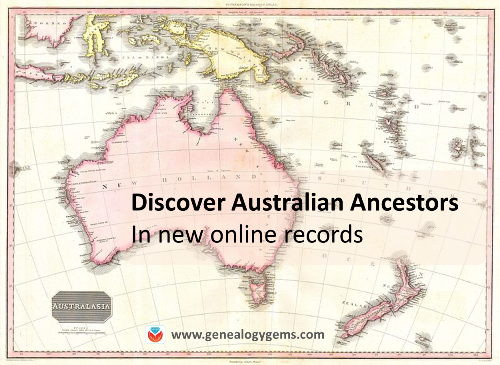
Featured this week: Australia Colonial Portraits, New South Wales and Queensland
The State Library of South Australia announced a newly-digitized collection of more than 1,000 photographs of South Australian colonists. The original photos have been on display at the State Library. “In 2017 they have returned as facsimiles (along with new indexes and online catalogue records),” says a Facebook post. Click to explore the men’s photos or women’s photos online for free. Several people have already identified their ancestors in these collections, judged by comments on the Facebook post. Even better news: the images may be freely copied and used. The Library responded to a question about use with, “The images are well out of copyright. We just ask that you cite as appropriate.”
Subscription website Findmypast.com has posted new Australia content, too:
- New South Wales Parish Registers, Christ Church Cathedral Newcastle. “The records span the years 1804 to 1900 and will reveal the names of your ancestor’s parents,” states Findmypast. “Currently the collection holds just over 5,000 baptisms, around 2,200 marriages records, and just over 3,300 burials. Some burials have also been transcribed from newspapers and other sources.”
- 1881 British Census, Crew and Passengers on Ships arriving in New South Wales. “Over 19,000 records….These records pertain to British and non-British passengers and crewmen arriving at Sydney from 1 January to 31 March 1881….Each record will reveal the individual’s age, status, nationality, occupation and details of their voyage.”
- New South Wales, Closer Settlement and Returned Soldiers Transfer Files. “Over 19,000 records have been added….These land transfer records can help you determine the property dealings of your New South Wales ancestors and see if they were involved in transferring land ownership. The records also include files relating to returned servicemen from the First World War who took part in the soldier settlement scheme.”
- Queensland School Pupil Index. “This database covers over 1.6 million names drawn from 1,022 Queensland schools,” says the collection description. “The earliest date of admission is 1864…. Schools range from large city schools with admissions in the thousands to one-teacher country schools with a total enrollment of only hundreds. Some schools have long ceased to exist; others are still functioning.”
Europe – Digital image archive
Just shy of a half million images from the cultural heritage digital archive Europeana are now part of the new Creative Commons (CC) search database. Now it’s even easier to discover and share images about an ancestor’s life–and to identify images you can re-use without copyright restriction.
“A tool for discovery, collaboration and re-use, CC Search enables users to search a variety of open repositories through a single interface to find content in the commons,” explains a Europeana blog post. “The new beta version of the project, which was released in early February, includes simple, one-click attribution, making it easier to credit the source of any image. CC Search beta also provides social features, allowing users to create, share, and save lists as well as adding tags and favorites to the objects in the commons….These records can all be used for commercial purposes, and are also open for modifications, adaption, or to be built upon. Click here to learn more about WWI and other genealogy-friendly content at Europeana.
England – Liverpool
Ancestry.com has updated its collections of Church of England parish records for Liverpool, England. These databases include baptisms, confirmations, marriages/banns and burials, along with a combined database of older baptisms, marriages and burials dating to 1659.
Germany (Bavaria) – Vital Records
Ancestry.com has published a new collection of Freilassing, Germany, Births, Marriages, and Deaths, 1876-1985. “This collection contains civil registry records from Bavaria,” states the collection landing page. “It includes births covering the years 1876-1899, marriages from 1876 to 1932, and death records for the years 1876-1985. Freilassing is a community in Berchtesgadener Land, Bavaria. It is situated immediately on the German border with Austria and is adjacent to the city of Salzburg. Until 1923, Freilassing was called ‘Salzburghofen’ and this is the name given in many of the records.”
Romania – Digital Archive
Thousands of documents from medieval Romania have been digitized and published online at Arhiva Medievala a Romanie. It’s the first collection of its kind for the country, says an article at Romania-Insider.com. Because of the age and content of these documents, they likely don’t have direct genealogical research value for most people. But anyone with Romanian roots might enjoy getting a sense of the country’s deep history.
United States: WWI, Millions of Marriages and More
A new online exhibit from the Library of Congress can help you better picture your U.S. ancestors’ experiences during and after World War I. “‘Echoes of the Great War: American Experiences of World War I‘ examines the upheaval of world war as Americans confronted it— both at home and abroad,” states the webpage. “The exhibition considers the debates and struggles that surrounded U.S. engagement; explores U.S. military and home front mobilization and the immensity of industrialized warfare; and touches on the war’s effects, as an international peace settlement was negotiated, national borders were redrawn, and soldiers returned to reintegrate into American society.”
Also in the U.S.: Findmypast has added over 6.7 million records to its U.S. marriage records collection. “New additions covering 127 counties across 18 states have been added to our collection of US marriages,” states a press release. “This is the first time ever these records have been released online, providing you with brand new opportunities to expand your family tree.” The 18 states with new records are Alabama, Arkansas, Connecticut, Delaware, Georgia, Iowa, Kentucky, Maine, New Hampshire, New Jersey, North Carolina, Ohio, Oregon, Rhode Island, Utah, Vermont, Washington and West Virginia.
More from across the U.S.:
- Georgia: Confederate Muster Rolls. The Georgia Archives has digitized and published its collection of Confederate Muster Rolls. According to the site, “The majority of the company muster rolls in this series are from military organizations created by the State of Georgia during the Civil War for service within the state. These military organizations include the Georgia Army (1861), the Georgia State Guards (August 1863-February 1864), and the Georgia State Line (1862-1865). The Georgia Militia is referred to as Georgia State Troops. Some units were later turned over to Confederate service. There are also nearly 250 muster rolls from Georgia Volunteer Infantry.”
- Minnesota: Newspapers.com now hosts the entire run of The Minneapolis Star Tribune, which dates to 1867. That’s more than 54,000 issues, among which are a 1976 headliner about a teenage star in the making: Prince. (See that article here for free, just because you can).
- Pennsylvania – Obituaries. A new collection of Beaver County, Pennsylvania obituaries (1920-1969) is now online at Ancestry.com.
2 Free Resources for Finding Australian Ancestors
Source for our lead image: Click here to view map of Australia
Disclosure: This article contains affiliate links and Genealogy Gems will be compensated if you make a purchase after clicking on these links (at no additional cost to you). Thank you for supporting Genealogy Gems!









 Another excellent reason to search the SSDI on multiple websites is that each website displays the information a little differently. And as you can see from the chart below, when it comes to the Genealogy Giants, there are definitely differences.
Another excellent reason to search the SSDI on multiple websites is that each website displays the information a little differently. And as you can see from the chart below, when it comes to the Genealogy Giants, there are definitely differences.